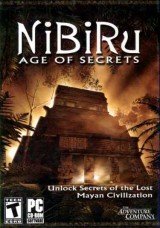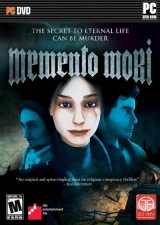Review for The 7th Guest
The 7th Guest is as famous and significant a game as Myst—well, almost. Released a year before Myst in 1993, it had the same kind of luminous graphics wound around a familiar point & click format. It tantalized users with a siren song of perspicuous graphics and open exploration. Gamers flocked to game stores clamoring for it. However, that is where the similarities between the two games end. Now some years later, Myst has proved a durable survivor of the adventure game exodus, still holding a great deal of its original appeal, while The 7th Guest has slowly faded into obscurity.
It’s not just the passage of time, technology, or even the rise of first-person shooters that has caused The 7th Guest’s appeal to slowly evaporate. Sadly, it was the inherit dullness of its largely inconsequential challenges. Where Myst immerses players in a number of detailed game worlds, The 7th Guest localizes the action to the rooms of a haunted mansion. Where Myst weaves the game’s puzzles into the environment, The 7th Guest’s are strictly stand-alone. Where Myst can be played in any number of ways successfully, The 7th Guest is very linear, requiring certain mysteries to be solved before others. And where Myst offers puzzles that steadily increase in difficulty, those in The 7th Guest are mostly common and simple.
The game’s premise is paper-thin, not surprising since it subscribes to the Pretty Pictures Principle (PPP). The rather unimaginative plot, chosen to compliment the PPP, revolves around Henry Stauf, a one time aimless drifter turned toy-making mogul who built the game's main environment, Stauf Mansion, seventy years ago. Henry, old and reclusive, had invited six guests to the mansion, none ever returned. Now it's up to you to unravel the mystery of what happened to them, who the mysterious “7th Guest” was, and ultimately how this person figures into the disappearance of Stauf and his guests.
The mansion itself is beautifully rendered, complete with gauzy ghosts similar to those seen in Morpheus. Samaritan ghosts, they are, as they manage to drop a hint or two or nudge you in the right direction. Sadly, this is about as much character interaction you’re going to get in The 7th Guest. It is a haunted mansion after all.
Stauf’s mansion is a wonderful piece of art and design. The 7th Guest truly excels as a showcase for what could be done with SVGA graphics at the time. In fact, it was its specific use of new technology (namely CD-ROMs) and graphic design ingenuity that has earned it a place in the history books. Before The 7th Guest, games did not come on CD-ROMs. Honest, cross my heart. Way back in the dark days of the early 90’s, games came on disks.
“CD-ROMs! What the heck for?” sniffed uninterested gamers. There was no way a game could possibly need the amount of space available on a CD-ROM, besides which almost no one had CD-ROM drives installed in their computers. However, all that space freed the designers of The 7th Guest to create the most fantastic graphics anyone had ever seen at the time. They had the space to hold cutting-edge SVGA graphics, and they used it. And as the fame of the game’s astonishing graphics spread, computer stores actually found themselves selling computers with CD-ROM drives just so people could play The 7th Guest.
Unwittingly, The 7th Guest also started a trend, albeit not one as overly evident as Myst, but significant nonetheless: an important new technology called Full Motion Video (FMV). Compared to what was on the market at the time—cartoon games like Curse of Monkey Island or pixel-based games like Gabriel Knight: Sins of the Father—The 7th Guest was a bold vision of the future of gaming. For all you FMV haters out there, you can blame The 7th Guest for every FMV game you have had to sit through since. In 1993, the game was quickly heralded as a gigantic and exciting jump in the evolution of game design.
Sadly, that bold vision comes to a screeching halt as far as puzzle design and construction are concerned. Brainteasers, riddles, anagrams, and other freaky shades of Jewels of the Oracle abound; every last dreary, clichéd one of them.
When looking at the puzzles in The 7th Guest, you can just feel the electric tendrils of brain drain shooting off the screen. The zap of overconfidence in the game’s PPP would marginalize The 7th Guest's continuing appeal and ultimately doom it as a not quite great game with some nice graphics.
Technology comes and goes; graphics once dazzling will fade, and then all a game has to rest on is its story and the intrigue of its challenges. Take a look around our forum sometime and see how many people list games like Gabriel Knight: Sins of the Father or the older Tex Murphy games amoung their favourites, and you will realize that people love those games despite their now inferior graphics, because they have great stories and challenging puzzles. That is why The 7th Guest was almost a great game.
(To learn more about the effects The 7th Guest had on the gaming industry, read the excellent Geoff Keighley article “The Rise and Fall of Trilobyte.”)
Our Verdict:
A lack of the elements that make an adventure timeless make this simply a good game.



_capsule_fog__medium.png)

























